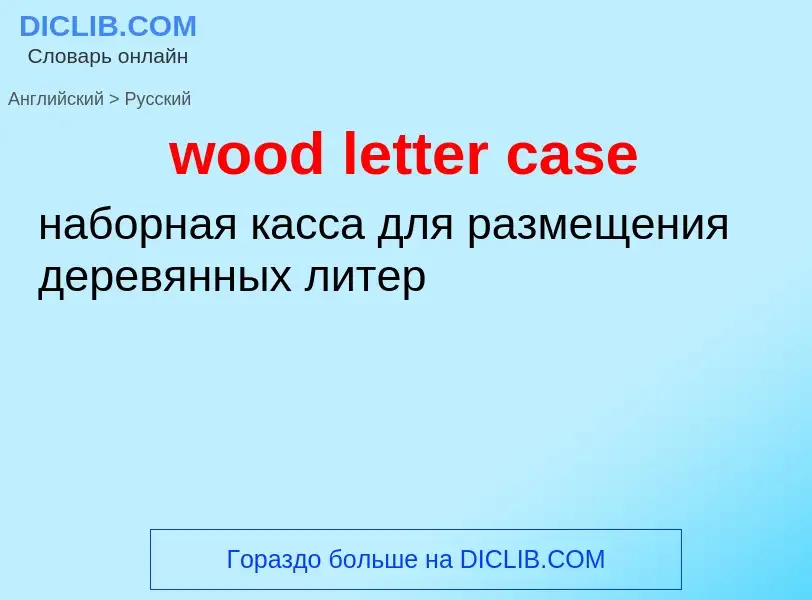Перевод и анализ слов искусственным интеллектом ChatGPT
На этой странице Вы можете получить подробный анализ слова или словосочетания, произведенный с помощью лучшей на сегодняшний день технологии искусственного интеллекта:
- как употребляется слово
- частота употребления
- используется оно чаще в устной или письменной речи
- варианты перевода слова
- примеры употребления (несколько фраз с переводом)
- этимология
wood letter case - перевод на русский
['minəskju:l]
прилагательное
общая лексика
минускульный
написанный минускулами
(очень) маленький
существительное
['minəskju:l]
общая лексика
минускул
рукопись
написанная минускулами
общая лексика
строчная литера
[ləuə'keis]
общая лексика
в нижнем регистре
режим, в котором ввод с клавиатуры производится при не нажатой клавише Shift и выключенном переключателе Caps Lock. При этом текст вводится строчными буквами
отделение со строчными литерами, цифрами и знаками препинания
полиграфия
касса строчных литер
строчные буквы
антоним
общая лексика
строчная буква, буква нижнего регистра
антоним
Определение

Википедия
Letter case is the distinction between the letters that are in larger uppercase or capitals (or more formally majuscule) and smaller lowercase (or more formally minuscule) in the written representation of certain languages. The writing systems that distinguish between the upper and lowercase have two parallel sets of letters, with each letter in one set usually having an equivalent in the other set. The two case variants are alternative representations of the same letter: they have the same name and pronunciation and are treated identically when sorting in alphabetical order.
Letter case is generally applied in a mixed-case fashion, with both upper and lowercase letters appearing in a given piece of text for legibility. The choice of case is often prescribed by the grammar of a language or by the conventions of a particular discipline. In orthography, the uppercase is primarily reserved for special purposes, such as the first letter of a sentence or of a proper noun (called capitalisation, or capitalised words), which makes the lowercase the more common variant in regular text.
In some contexts, e.g., academic, it is conventional to use one case only. For example, engineering design drawings are typically labelled entirely in uppercase letters, which are easier to distinguish individually than the lowercase when space restrictions require that the lettering be very small. In mathematics, on the other hand, uppercase and lower case letters denote generally different mathematical objects, which may be related when the two cases of the same letter are used; for example, x may denote an element of a set X.

![[[Handwritten]] Cyrillic script [[Handwritten]] Cyrillic script](https://commons.wikimedia.org/wiki/Special:FilePath/Fountain pen writing (literacy).jpg?width=200)
![theory of general relativity]].) theory of general relativity]].)](https://commons.wikimedia.org/wiki/Special:FilePath/Headline.png?width=200)
